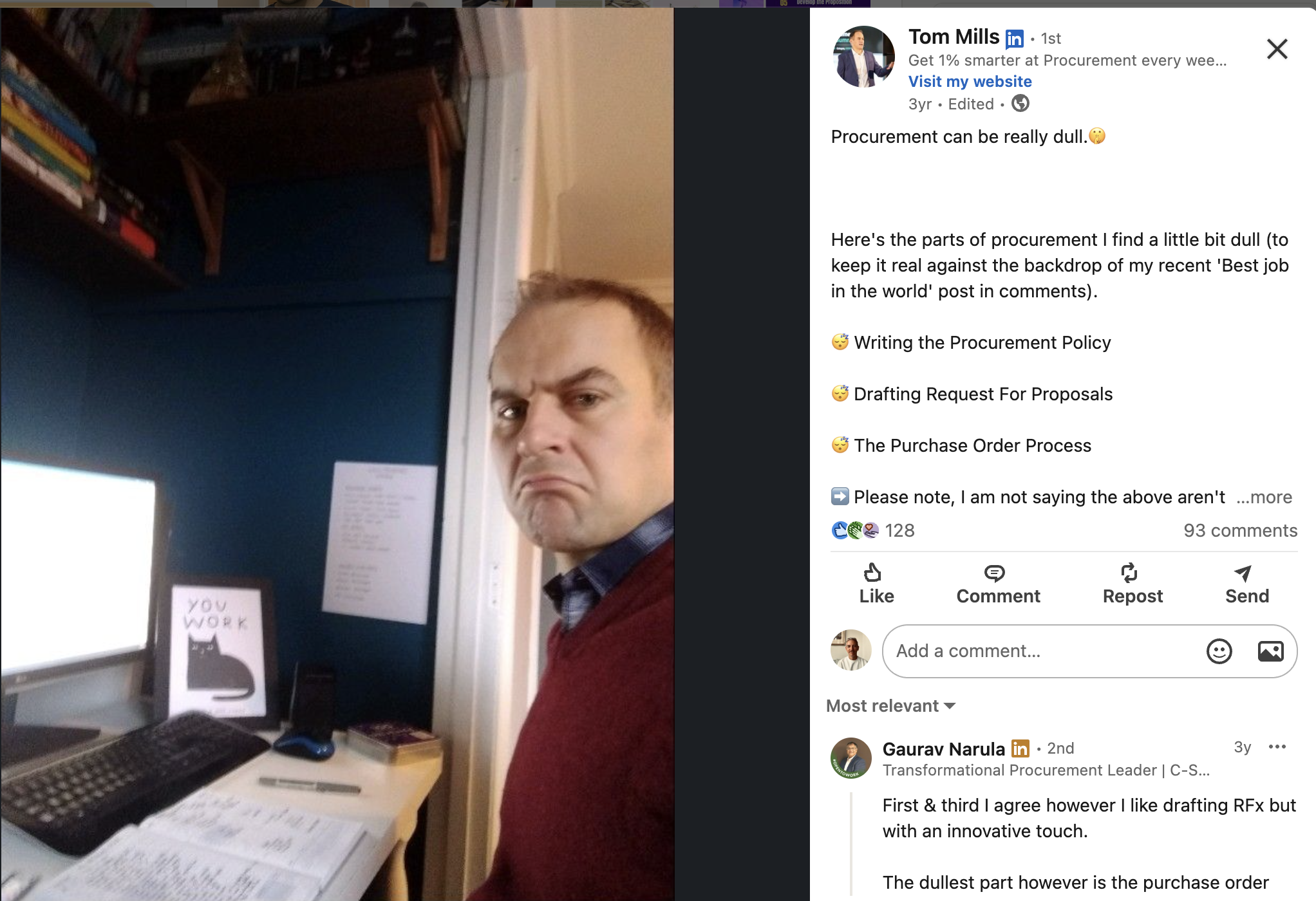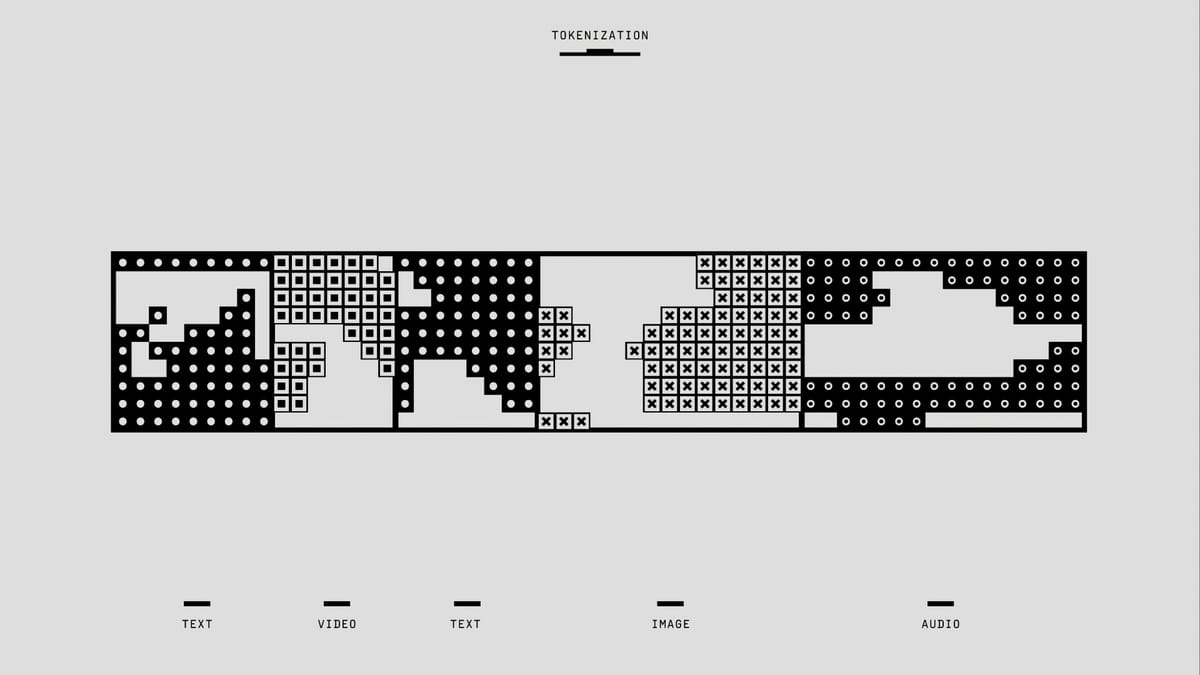Procurement & contract teams are under funded.
Last year I paid a researcher to count the number of HR, Procurement and Contract Managers in 2,000 companies. Guess what? for every 25 (!) professionals in Human Resources, there is often only one (1) in Procurement or Contract Management. This is legacy but a structural fault line running through the modern enterprises who have 50%+ of their human resources as external resources. This reflects a fundamental misunderstanding of the modern "total workforce," which is increasingly composed of that core group of non-employee talent.
My analysis shows profound shift in workforce composition that isnt reflected in the number of people managing those resources. I think the solution lies in a new but old paradigm: Total Talent Management (TTM) - or maybe TT&SM (Service), a holistic strategy built on a robust HR-Procurement partnership and enabled by an integrated technology ecosystem. I'm trying to coin a new phrase - the time has come to look beyond traditional headcount and begin a choreography of the entirety of work.
Here is the data with my thoughts afterwards:
Part I: The 'workforce' has evolved
To grasp the severity of the organizational imbalance, one must first accept a fundamental truth: the traditional definition of a "workforce" as a collection of permanent, full-time employees is obsolete. The modern enterprise runs on a blended model, a complex and dynamic ecosystem of talent that extends far beyond the names on the payroll. This extended workforce is not a peripheral concern; it is a core, strategic component of value creation, and its scale is expanding at an explosive rate.
The new blended reality exposes a critical flaw in traditional organizational metrics—what can be termed the "Measurement Fallacy". The standard HR-to-employee ratio, a cornerstone of human capital benchmarking, is typically calculated as the number of HR full-time equivalents (FTEs) divided by the total number of employee FTEs.6 This formula creates a dangerous illusion of control. A company might proudly report a "healthy" ratio of 1.7 HR professionals per 100 employees, in line with SHRM benchmarks.7 However, if that same company engages another 100 non-employee workers who contribute significant value but fall outside the FTE calculation, the effective talent management ratio is halved to just 0.85 per 100 value creators. This state of critical under-resourcing is completely masked by an obsolete metric. The very tool used to measure HR's capacity is blind to a vast and growing portion of the talent it should be strategically influencing.
Part II: A Tale of Two Functions

The 25-fold disparity in staffing between HR and Procurement is not an accident of organizational design but the logical outcome of 35+ years of divergent evolution. These two critical functions grew up in parallel universes, developing distinct languages, mandates, and metrics in response to different external pressures. Understanding this history is essential to diagnosing the root cause of today's dysfunctional silos and appreciating the challenge of integration.
The genesis of Human Resources lies in the administrative "personnel" departments of the early 20th century, which were created to manage the basic transactions of employment in the industrial era: payroll, timekeeping, and rudimentary compliance.9 Its evolution was not driven by commercial strategy but by social and legal imperatives. The rise of organized labor in the post-war era expanded HR's role to include labor relations and collective bargaining.9 This history forged HR's identity and its core competency: the management of the employee as a legal and social entity. Its focus became the entire employee lifecycle, from hiring and onboarding to performance management and separation, all within the legal framework of employment law.11
Procurement, conversely, was born from commercial necessity. Initially a transactional "purchasing" function buried within finance or operations, its strategic importance was ignited by external market shocks.12 Its evolution was subsequently fueled by the pressures of globalization, the relentless pursuit of cost efficiency, and the recognition that strategic sourcing and supplier relationship management could be powerful levers for competitive advantage.12
This history cemented Procurement's identity and core competency: the management of the supplier and the contract as commercial instruments. Its focus became the source-to-pay lifecycle, centered on risk mitigation, cost control, and value extraction from third-party relationships.14
This profound historical divergence is perfectly encapsulated in their modern-day performance metrics. HR departments measure their own size and effectiveness relative to the number of people they manage, with benchmarks like "HR staff per 100 employees" being the gold standard.6 Procurement, on the other hand, is measured against commercial value and productivity, using metrics like "FTEs per $1 billion in spend," "number of contracts managed per FTE," or "purchase orders processed per FTE".18 They are fundamentally measuring different things because they have been conditioned to see the world through different lenses.
This creates an organizational "no man's land" where the rapidly growing contingent workforce resides. An independent contractor or a team engaged via a Statement of Work (SOW) is a hybrid entity that defies these neat, historical categories. They are not a traditional employee, so they fall outside the purview of HR's processes and legal frameworks. Simultaneously, they are not a simple supplier of commoditized goods; they are a provider of specialized skills, services, and talent. Yet, they are often managed by Procurement as just another line item on an invoice, a transaction to be processed with minimal consideration for the "human" element of the resource. This governance vacuum is the direct result of these parallel evolutionary tracks.

Part III: What to do about it
The organizational chasm between HR and Procurement is not a theoretical problem; it is a source of tangible and escalating risk that directly impacts the bottom line, legal standing, and strategic agility of the modern enterprise. When no single function has clear ownership of the total workforce, accountability dissolves, and predictable failures emerge. These risks are not isolated but form an interconnected system where a weakness in one area triggers a cascade of negative consequences across the organization.
Financial Leakage and Value Erosion
The most immediate consequence of under-resourcing the management of non-employee labor is significant financial leakage. Research from the International Association for Contract & Commercial Management (IACCM) reveals that poor contract management can cost companies up to 9.2% of their annual revenue.19 This value dissipates through a variety of channels, including missed renewal opportunities, failure to enforce discounts, and "maverick spend," where hiring managers engage contractors outside of established processes and negotiated rates.20 Furthermore, McKinsey & Company estimates that inadequate post-signature contract oversight can lead to a deterioration in vendor performance and a value erosion of as much as 15% to 30% of the total contract value.21 When the function responsible for contract management is staffed at a 30-to-1 deficit compared to the function managing employees, this level of value destruction is not just possible; it is inevitable.
Compliance and Legal Exposure
Far more perilous than direct financial loss is the vast and complex landscape of legal and compliance risk. The primary danger is worker misclassification. As the nature of work becomes more integrated, the legal lines between an independent contractor and an employee blur. When a company exerts significant control over a contractor's work—dictating their hours, providing tools, and managing their daily tasks—it risks having that worker reclassified as an employee by regulatory bodies like the IRS or Department of Labor.22 The consequences are severe, including liability for back taxes, unpaid overtime, employee benefits, and substantial penalties.23
Closely related is the risk of co-employment, where a company and its staffing supplier are both considered legal employers of a contingent worker.25 This can make the client company liable for a host of issues it thought it had outsourced, from wage and hour violations to discrimination claims and workers' compensation.25 HR possesses deep expertise in navigating these complex labor laws, but this expertise is rarely applied to the contingent workforce, which is often managed solely through a procurement lens.14
The potential costs are staggering. In a widely reported case, a major U.S. technology company faced potential liabilities exceeding $100 million for the systemic underpayment of temporary workers across 16 countries. In a separate ruling, the same company was deemed a "joint employer" of its contract workers, obligating it to negotiate with their union for the first time.24 These are not edge cases; they are stark warnings of the liabilities that accumulate in the governance vacuum between HR and Procurement.
Strategic Inefficiency and Talent Blindness
The final category of risk is strategic. Without a unified system for tracking all workers, leadership lacks a true, holistic view of its total talent pool. This makes strategic workforce planning impossible.28 Key questions cannot be answered: What critical skills reside within our contractor base? Where are our talent dependencies? Are we developing or buying the right capabilities for the future? This blindness leads to redundant efforts, critical skills gaps, and a crippling lack of organizational agility.
This fragmented approach also creates a poor experience for the non-employee talent itself. Inconsistent onboarding, delayed payments, and a lack of connection to the company's mission damage the employer brand in the freelance marketplace.30 In an economy where top-tier independent talent has a choice of projects, a reputation for being difficult to work with is a significant competitive disadvantage.
These risks are deeply interconnected. A lack of strategic oversight (a strategic risk) allows a hiring manager to bypass approved channels and engage a contractor directly. This creates rogue spend (a financial risk). To get the project done, the manager integrates the contractor into their team, setting their hours and directing their work. This behavior creates a high probability of misclassification and co-employment (a legal risk). An audit then triggers fines and back-pay liabilities (a financial risk) and damages the company's ability to attract top freelance talent (a strategic risk). The entire destructive cascade begins with the initial failure to properly resource the function responsible for managing the commercial and contractual engagement of talent.
Table 2: Risk Matrix: The Dangers of a Disconnected Workforce Strategy
Part IV: Unifiying talent and services
Addressing the structural flaws exposed by the 30-to-1 ratio requires more than incremental adjustments; it demands a fundamental rethinking of how an organization acquires, manages, and optimizes its entire talent base. The solution is a three-tiered framework that moves from a guiding philosophy to a practical operating model and is powered by an enabling technology engine.
Total Talent & Services Management (TT&SM)
The journey begins with a strategic and philosophical shift toward Total Talent & Services Management (TT&SM). TT&SM is a holistic approach that breaks down the artificial barriers between different worker types. It is the practice of managing all sources of talent—permanent employees, contingent staff, freelancers, and SOW-based service providers—under a single, integrated strategic umbrella.28 The goal of TT&SM is to ensure that for any given business need, the organization can access the right skills at the right time and in the most effective and efficient way, regardless of the worker's classification.33 Adopting a TT&SM philosophy means moving away from siloed, reactive requisition-filling and toward proactive, strategic workforce orchestration. Tellingly, one of the most significant barriers to successful TT&SM implementation identified by industry analysts is the very organizational silo between HR and Procurement that this report addresses.34
A New Operating Model: The HR-Procurement Partnership
TTM cannot be executed by a single function. It requires a new, collaborative operating model—a strategic alliance between HR and Procurement that leverages the unique strengths of each.14 This is not a merger or a takeover, but a partnership with clearly defined and complementary roles, often governed by a cross-functional steering committee.36
- HR's Role: HR takes the lead on overall talent strategy, ensuring that the acquisition of non-employee talent aligns with the organization's broader human capital goals. It owns the development of consistent policies, governance frameworks, and DE&I initiatives that span the entire workforce. Critically, HR applies its deep expertise in labor law and risk management to proactively mitigate people-centric risks like worker misclassification and co-employment.14
- Procurement's Role: Procurement leads on commercial and financial stewardship. It applies its expertise in strategic sourcing, supplier management, and contract negotiation to build and manage a high-performing network of talent suppliers (e.g., staffing agencies, consulting firms). It is responsible for cost control, rate card management, performance monitoring, and ensuring operational efficiency throughout the source-to-pay process.14
- Shared Responsibilities: Together, in a governed partnership, they oversee strategic workforce planning, jointly select and manage key talent suppliers, co-develop integrated technology roadmaps, and monitor the overall performance and health of the total talent ecosystem.14
The Engine: An Integrated Technology Stack
This collaborative model is made possible by a unified technology stack. The critical step is the deep integration of two core enterprise systems: the Vendor Management System (VMS), the traditional domain of Procurement, and the Human Resources Information System (HRIS), the central nervous system of HR.28
A VMS is a software platform designed to manage the entire lifecycle of the external workforce, from sourcing and onboarding to time tracking and invoicing.39 An HRIS is the system of record for all employee data.38 When these systems operate in isolation, the organizational silos are reinforced by technological ones. However, when they are integrated, they create a single, authoritative source of truth for the entire workforce.41
Ultimately, the technology does more than just enable the strategy; it actively drives it. The process of integrating a VMS and HRIS forces the necessary, and often difficult, conversations between HR and Procurement. To make the systems talk to each other, the functions must first agree on a shared language. They must define a common data architecture and a unified taxonomy for skills, roles, and worker types that applies across the entire enterprise. The technology implementation project, therefore, becomes the practical catalyst that transforms the abstract goal of "collaboration" into a concrete, system-driven reality. It builds the very partnership model it is designed to support.
Conclusion: Going From Managing Headcount to Orchestrating Work
The observation that HR departments are often 25x times larger than their procurement and contract management counterparts is more than a curious statistic; it is a powerful diagnostic tool that reveals a company's fundamental preparedness for the modern world of work. It is a clear indicator of an organization still anchored in a 20th-century model, one that over-invests in managing a shrinking portion of its value-creating talent—the traditional employee—while dangerously under-investing in the systems, processes, and expertise needed to manage the burgeoning external workforce.
The modern blended workforce, a dynamic mix of permanent staff, contingent workers, freelancers, and service providers, has rendered this legacy structure obsolete and hazardous. The analysis is clear: the siloed approach, where HR focuses exclusively on employees and Procurement treats talent as a simple commodity, systematically creates unacceptable levels of financial, legal, and strategic risk. Value leaks from poorly managed contracts, legal liabilities mount from misclassification and co-employment, and strategic agility is crippled by a lack of visibility into the total talent ecosystem.
The path forward requires decisive leadership and a commitment to fundamental change. The future of competitive advantage lies in Total Talent Management, a holistic strategy that views every contributor, regardless of classification, as part of a unified whole. This strategy is not an HR initiative or a Procurement project; it is a business imperative. It must be built on the bedrock of a strong, collaborative HR-Procurement partnership, where people-centric talent strategy and commercial acumen are fused. This partnership, in turn, must be powered by an integrated technology ecosystem that connects the VMS and HRIS to create a single source of truth for the entire workforce.
This transformation is a C-suite responsibility. The Chief Executive Officer, Chief Human Resources Officer, and Chief Procurement Officer must collectively sponsor and champion the breakdown of these legacy silos. The directive for every leader must be to shift the organizational mindset from the simple, outdated task of counting heads to the complex, strategic imperative of orchestrating work. The survival, resilience, and growth of the enterprise depend on it.
Works cited
- Contingent Workforce Trends: 4.3% of US Workers Are Contingent, accessed on August 9, 2025, https://acarasolutions.com/blog/contingent-staffing/contingent-workforce-trends-4-3-of-us-workers-are-contingent/
- Contingent and Alternative Employment Arrangements Summary ..., accessed on August 9, 2025, https://www.bls.gov/news.release/conemp.nr0.htm
- Contingent jobs and alternative work arrangements: What you need to know, accessed on August 9, 2025, https://www.bls.gov/blog/2024/contingent-jobs-and-alternative-work-arrangements-what-you-need-to-know.htm
- Freelancing Stats in 2025: Market Size, Earnings, and Future Trends ..., accessed on August 9, 2025, https://www.upwork.com/resources/freelancing-stats
- 9 Freelance Statistics, Trends and Insights for 2025 - Mellow, accessed on August 9, 2025, https://www.mellow.io/mellow-media/the-state-of-freelance-9-top-statistics-facts-and-trends-2024
- The Ideal HR to Employee Ratio: What It Is and How To Calculate It ..., accessed on August 9, 2025, https://www.aihr.com/blog/hr-to-employee-ratio/
- HR to Employee Ratio: Benchmarks & Best Practices - Mosaic.tech, accessed on August 9, 2025, https://www.mosaic.tech/financial-metrics/hr-to-employee-ratio
- How Big Should Your HR Team Be? Check Our Calculator to Find Out, accessed on August 9, 2025, https://stratus.hr/resources/hr-team-size
- The Evolution of the HR Department and What the Future Holds - Insider Newsletter Archives - Workplace Intelligence, accessed on August 9, 2025, https://newsletter.workplaceintelligence.com/posts/workplace-intelligence-insider-the-evolution-of-the-hr-department-and-what-the-future-holds
- The 100 Year History of the Human Resources Department - Visier, accessed on August 9, 2025, https://www.visier.com/blog/the-100-year-history-human-resources-department/
- The Evolving Role of HR: Accelerating its Strategic Value - Wowledge, accessed on August 9, 2025, https://wowledge.com/322-hrs-evolving-role-deep-dive
- Procurement's Evolution From Back Office to Strategic Business Role | SupplyChainBrain, accessed on August 9, 2025, https://www.supplychainbrain.com/blogs/1-think-tank/post/41112-procurements-evolution-from-back-office-to-strategic-business-role
- How Procurement And HR Working Together Adds Value - Adecco, accessed on August 9, 2025, https://www.adecco.com/en-us/employers/resources/article/how-can-procurement-and-hr-work-together
- HR or procurement: How about both? - Staffing Industry Analysts, accessed on August 9, 2025, https://www.staffingindustry.com/editorial/cws-30-contingent-workforce-strategies/hr-or-procurement-how-about-both-
- Who Should Own Contingent Workforce Management – HR or Procurement? - Omni RMS, accessed on August 9, 2025, https://www.omnirms.com/rpo-recruitment/managed-service-provider/who-should-own-contingent-workforce-management-hr-or-procurement/
- The Myth of One HR Professional to 100 Employees - MRA, accessed on August 9, 2025, https://www.mranet.org/resource/myth-one-hr-professional-100-employees
- HR to Employee Ratio: How To Make Sure Your Team Is Supported - Mosey, accessed on August 9, 2025, https://mosey.com/blog/hr-to-employee-ratio/
- How Do You Benchmark Procurement? | APQC, accessed on August 9, 2025, https://www.apqc.org/blog/how-do-you-benchmark-procurement
- The costs of poor contract management | House of Control, accessed on August 9, 2025, https://www.houseofcontrol.com/blog/the-costs-of-poor-contract-management
- Uncovering the Hidden Risks of Poor Contract Management - Today's General Counsel, accessed on August 9, 2025, https://todaysgeneralcounsel.com/uncovering-the-hidden-risks-of-poor-contract-management/
- The Hidden Cost of Poor Contract Management - August Consulting, accessed on August 9, 2025, https://www.augustconsulting.com.au/post/the-hidden-cost-of-poor-contract-management
- How OneBeacon's MSP Solution Protects Your Contingent Workforce |… - Beacon Hill, accessed on August 9, 2025, https://bhsg.com/resources/mitigating-risk-how-onebeacons-msp-solution-protects-your-contingent-workforce-in-3-key-ways
- What Is Co-Employment: Definition, Risks, and Workforce Management Tips - MBO Partners, accessed on August 9, 2025, https://www.mbopartners.com/blog/misclassification-compliance/what-is-co-employment/
- Is a mismanaged contingent workforce putting your company at risk?, accessed on August 9, 2025, https://www.beeline.com/resources/is-a-mismanaged-contingent-workforce-putting-your-company-at-risk
- Identify and manage top risks in your contingent workforce program - Beeline, accessed on August 9, 2025, https://www.beeline.com/resources/biggest-risks-contingent-workforce-program-mitigate
- Risks of Co-Employment - Horton Group, accessed on August 9, 2025, https://www.thehortongroup.com/resources/risks-of-co-employment/
- What is co-employment? How it works and benefits - ADP, accessed on August 9, 2025, https://www.adp.com/resources/articles-and-insights/articles/p/peo-what-is-co-employment.aspx
- What is total talent management? | Definition and Benefits | SAP, accessed on August 9, 2025, https://www.sap.com/products/hcm/total-talent-management.html
- What is Total Workforce Management? - Tech Talent Partners - Procom, accessed on August 9, 2025, https://procomservices.com/en-us/total-workforce-management/
- Overcoming the Most Common Challenges of Total Talent Management Solutions, accessed on August 9, 2025, https://www.innovativeemployeesolutions.com/blog/overcoming-the-most-common-challenges-of-total-talent-management-solutions/
- www.sthree.com, accessed on August 9, 2025, https://www.sthree.com/en-gb/glossary/t/total-talent-management/#:~:text=Total%20talent%20management%20(TTM)%20is,acquisition%20strategy%20and%20workforce%20approach.
- 7 Reasons Why You Need Total Talent Management (TTM), accessed on August 9, 2025, https://www.hirewithnear.com/blog/total-talent-management
- What is total talent management? | Glossary - SThree, accessed on August 9, 2025, https://www.sthree.com/en-gb/glossary/t/total-talent-management/
- The Ultimate Guide to Total Talent Management - Workspend Inc, accessed on August 9, 2025, https://workspend.com/ultimate-guide-to-total-talent-management/
- What is Total Talent Management? | Recruitment Outsourcing Specialists - Guidant Global, accessed on August 9, 2025, https://www.guidantglobal.com/what-is-outsourcing/what-is-total-talent-management
- Aligning HR and Procurement for Contingent Workforce Success - Oncore Services, accessed on August 9, 2025, https://www.oncoreservices.com/news-resources/aligning-hr-and-procurement-for-contingent-workforce-success
- What is a Vendor Management System (VMS)? | Workday US, accessed on August 9, 2025, https://www.workday.com/en-us/topics/hr/vendor-management-system.html
- Why VMS Integration is Key to Seamless Contingent Workforce Recruiting, accessed on August 9, 2025, https://www.conexisvmssoftware.com/blog/why-vms-integration-is-key-to-seamless-contingent-workforce-recruiting
- What is a vendor management system (VMS)? - SAP, accessed on August 9, 2025, https://www.sap.com/norway/products/spend-management/supplier-lifecycle/what-is-a-vendor-management.html
- Vendor management systems: A guide for HR professionals streamlining contingent workforces - TestGorilla, accessed on August 9, 2025, https://www.testgorilla.com/blog/vendor-management-system/
- Optimizing VMS ROI Through Total Workforce Strategy - Workday Blog, accessed on August 9, 2025, https://blog.workday.com/en-us/optimizing-vms-roi-through-total-workforce-strategy.html
- Contingent Workforce Software: Integrating VMS into Centralized HR, accessed on August 9, 2025, https://www.conexisvmssoftware.com/blog/contingent-workforce-software-integrating-centralized-hr
- Workday VNDLY ROI, accessed on August 9, 2025, https://www.workday.com/en-us/products/vndly-vms/workday-vndly-roi.html
- The #1 vendor management system (VMS) for enterprise companies globally. | Beeline, accessed on August 9, 2025, https://www.beeline.com/solutions/enterprise
How Thermo Fisher Scientific reduced HRIS and eProcurement errors - Beeline, accessed on August 9, 2025, https://www.beeline.com/resources/client-success-story-beeline-thermo-fisher-scientificAn evidence based approach that Procurement & CWP leaders are under funded.
Last year I paid a researcher to count 75 different roles at 2,000 companies: the FTSE 500, the S&P 500, the Fortune 500 and the Unicorn 500 from Crunchbase.
HR Roles (25)
- HR Director
- HR Business Partner
- Talent Acquisition Manager
- Recruitment Specialist
- Compensation & Benefits Manager
- Learning & Development Manager
- HR Generalist
- HR Coordinator
- Employee Relations Specialist
- Diversity & Inclusion Manager
- HR Data Analyst
- Workforce Planning Manager
- Performance Management Specialist
- HR Compliance Officer
- HR Operations Manager
- People & Culture Director
- Organizational Development Manager
- Change Management Lead
- HR Technology & Systems Manager
- HR Transformation Lead
- Compensation & Rewards Director
- Head of Talent Acquisition
- Head of HR Analytics
- Chief Human Resources Officer (CHRO)
Procurement Roles (25)
- Chief Procurement Officer (CPO)
- Procurement Director
- Category Manager
- Strategic Sourcing Manager
- Procurement Manager
- Supplier Relationship Manager
- Purchasing Manager
- Procurement Analyst
- Contracts & Procurement Specialist
- Vendor Manager
- Procurement Coordinator
- Supply Chain & Procurement Consultant
- Sustainable Procurement Manager
- Indirect Procurement Specialist
- E-Procurement Specialist
- Supplier Diversity Manager
- Logistics & Procurement Manager
- International Procurement Manager
- Public Sector Procurement Officer
- Procurement Policy Analyst
- Procurement Contracts Manager
- Demand & Supply Planning Manager
- Procurement Training Manager
- Procurement Risk Manager
Contract & Supplier/Vendor Management Roles (25)
- Contract Manager
- Contract Administrator
- Contract Negotiator
- Contract Specialist
- Legal & Contract Compliance Officer
- Senior Contract Manager
- Government Contracts Manager
- Commercial Contracts Manager
- Procurement & Contracts Coordinator
- Vendor Contracts Specialist
- Contracts Risk Analyst
- Contract Performance Manager
- IT Contracts Manager
- Outsourcing & Contracting Officer
- Supply Chain Contracts Manager
- Vendor Risk Manager
- Vendor Performance Manager
- Strategic Supplier Relationship Manager
- Vendor Governance Manager
- Service Level Agreement (SLA) Manager
- Third-Party Risk Manager
- Procurement & Supplier Compliance Manager
- Sourcing & Supplier Management Lead
- Vendor Strategy Director
- Head of Procurement & Supplier Management


